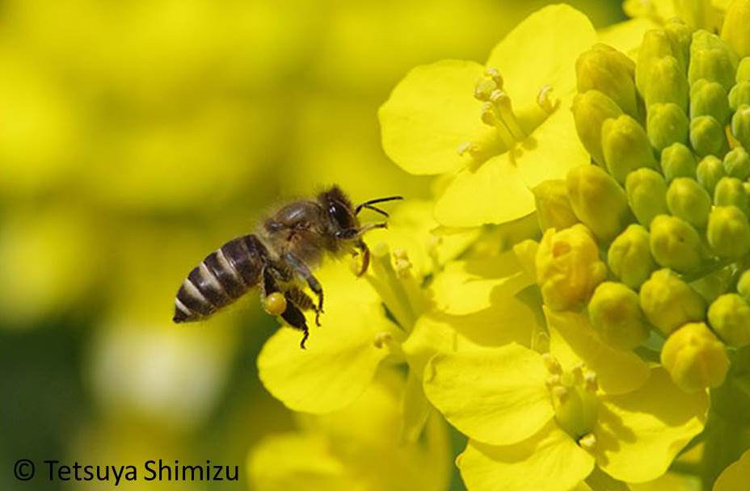The Eastern honey bee Apis cerana is of central importance for agriculture in Asia. It has adapted to a wide variety of environmental conditions across its native range in southern and eastern Asia, which includes high?altitude regions. Eastern honey bees inhabiting mountains differ morphologically from neighboring lowland populations, and may also exhibit differences in physiology and behavior. The genomes of 60 Eastern honey bees collected from high and low altitudes in Yunnan and Gansu provinces, China, were compared to infer their evolutionary history and to identify candidate genes that may underlie adaptation to high altitude. Using a combination of F_ST?based statistics, long?range haplotype tests, and population branch statistics, several regions of the genome were identified that appear to have been under positive selection. These candidate regions were strongly enriched for coding sequences and had high haplotype homozygosity and increased divergence specifically in highland bee populations, suggesting they have been subjected to recent selection in high altitude habitats. Candidate loci in these genomic regions included genes related to reproduction and feeding behavior in honey bees. Functional investigation of these candidate loci is necessary to fully understand the mechanisms of adaptation to high?altitude habitats in the Eastern honey bee. The results of this research will be very useful to monitor the populations of Asian bees and establish conservation priorities. Pollination services provided by bees are essential for food production throughout the world, but Asian bee populations in China have been declining since the early 20th century due to changes in agricultural practices and the introduction of non-native bees. Therefore, it is important to understand how populations of this species adapt to different environmental conditions such as altitude, as this can help improve conservation efforts and management. informacion[at]ebd.csic.es: Montero-Mendieta et al (2018) The genomic basis of adaptation to high-altitude habitats in the Eastern honey bee (Apis cerana). Mol Ecol DOI 10.1111/mec.14986.
https://www.ncbi.nlm.nih.gov/pubmed/30576015








 ¡Abierta convocatoria para proyectos de investigación en la ICTS- Doñana!
¡Abierta convocatoria para proyectos de investigación en la ICTS- Doñana!


